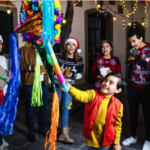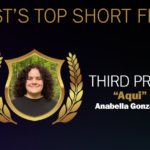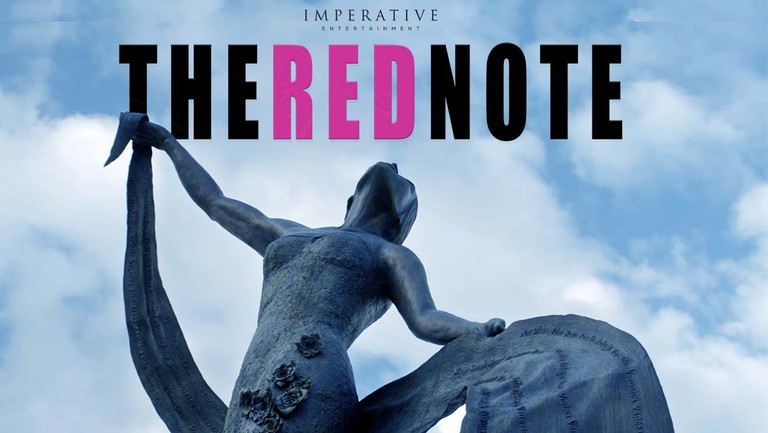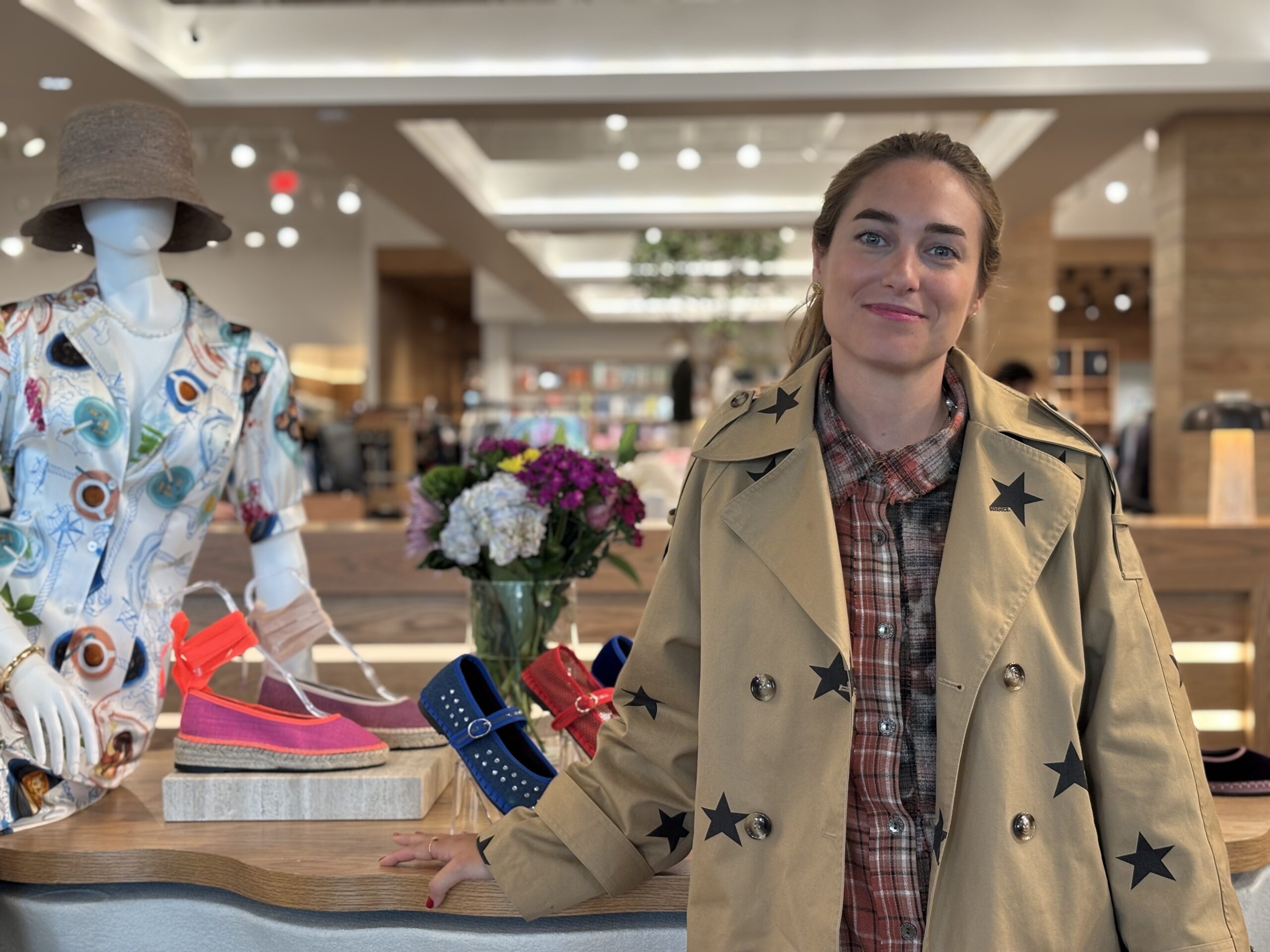Hosted by Dana Garibaldi
Editor’s Note: This is a transcription of Latinitas Magazine’s SoundCloud podcast “20 Questions With,” where we invite bold and creative individuals to discuss their experiences and background. Listen along by clicking the link!
Hola Chicas! Welcome to 20 Questions With, a podcast in conjunction with Latinitas Magazine. Latinitas Magazine is a strong voice for Latina and POC Youth, which is why the hosts of 20 Questions With are all young Latinas who are looking to gain experience in innovative and creative fields just like you!
In each episode, you’ll hear from striking individuals who are inspiring today’s youth with their passion, motivation, and grit.
Today, join Volunteer Writer Dana Garibaldi while she sits down and asks 20 Questions With producers Estefania Bonilla Hernandez and Craig Whitney of The Red Note Podcast. “The Red Note” podcast is a 10 episode podcast series hosted by investigative journalist Lydia Cacho. The show follows the stories behind the femicides in Ciudad Juarez, Mexico. The show is the first fully bilingual podcast, with complete English and Spanish episodes (under the title “La Nota Roja”).
Both The Red Note and La Nota Roja were written and directed by Craig Whitney, with lead producer Estefania Bonilla Hernandez.
We had an amazing time talking to Estefania and Craig, and they walked us through valuable information about the femicides. With that said, this episode will be divided into two parts for our listeners.
DANA: You mentioned that the femicides were not just happening in Juarez; they’re happening all over, extending to multiple countries as well. So should others be concerned for their safety during this time? And how does that issue extend to those other countries? How should people tackle that awareness?
CRAIG: We tried to keep the podcast focused as much as possible on Ciudad Juarez because we didn’t just want to talk about the acts of violence. We also wanted to talk about the city’s social fabric and the victims and their families’ lives outside of their deaths. To have the time to do that in 10 episodes, we felt it was more important to try and convey a comprehensive picture of this one city than to try and tackle too many subjects at once and not tackle any of them that effectively. One of the things that become apparent as you study the femicides in Juarez is that the same pattern of investigated failures and how local, city, and state governments respond to manifestations of violence against women has been repeated similarly in many states across Mexico and other Latin American countries. Juarez is the city where I don’t know if you can say where this issue began, but the femicides were certainly first publicized in Juarez. But it’s not unique there. I think Estefania should probably speak more eloquently than I could about the personal dangers and systemic failure of Latin American women.
ESTEFANIA: Femicides in Juarez have spread throughout Mexico? It did. But it didn’t happen because of Juarez; it happened because of a violent structure against women. For example, one of the things that always happened was more women were experiencing violence where maquiladoras were put. It’s because of the poor infrastructure that the Mexican state hasn’t gone through all their population. These maquiladoras and factories offer a job for people who do not have many accusative capacities. It always experienced a lot of massive migration to these points where the maquiladoras are. The state does not have the quick response or enough response or budgetary responses to attend to this kind of a population that it’s coming through, and they are migrating to these parts of the country.
What happens is that you have many families living together. So they have people in these populous parts, don’t have running water or electricity, come short with education, and it’s hard to access healthcare. When you have precarious circumstances around, you now experience a lot of violence and stress. That is what happens. That’s what we have been observing when a maquiladora is put in some part of the country. This can also happen in other various industries; it’s not only maquiladoras. It can be an industry that offers work that is not that specialized. Once a person gets one of those jobs —it’s an opportunity for them; it’s life-saving. No, it’s not the best, but it’s what it was; there it is. That’s the reason why others should be aware of their own safety because this is not some simple thing, that it’s bad against the good or something like that.
We have to start thinking that we need to build communities. We need to start to build places where they are safe, and they can have things that the state should guarantee us like access to water, electricity, education, and health services. It shouldn’t be a privilege; it shouldn’t be something that you have to have money to pay for that. I’m pretty sure that you from the U.S. understand what I’m talking about. Now, it’s just different contexts in our societies, but it’s the same thing in the background. I’m pretty sure that you can relate to these difficult things that happen in all cities. That’s the reason why it’s not only about Mexico. It’s also about a lot of countries and states that are not rich, and they suffer. They can’t respond how it’s needed for the circumstance in the situation of their people.
CRAIG: I think it’s more compelling to talk about serial killers or Narcosatánicos and their role in these serial murders in Juarez. As Estefania pointed out, living on the outskirts of the city and having to take a two hours bus ride to get to your job, and having to walk down the street without street lamps, arguably plays a much bigger role in these murders happening than serial killers crossing the border than fantastic theories that have arisen about the femicides.
The reason that people are living in these conditions is so that we can buy cheaper DVD players in the United States. As we talked about before, what I hope people will take away from listening to this podcast is the systemic nature of these murders. You have an interplay of international economic and social forces that are causing these deaths to occur. Even though in the United States, there’s not much we can do about corruption in the Mexican government or machismo in Mexican society; there are things we can do to prevent guns from being brought across the border to arm criminal groups. Or to make informed decisions about you know —I don’t even think it’s about us making informed decisions because it’s the same thing about how the petrochemical industry started this concept of ‘my carbon footprint’ like it’s our individual responsibility to address global warming when you have these multinational oil companies that are truly responsible for it.
One thing that was horrifying in the last year was that they opened the maquiladoras up very quickly. After the pandemic started, I think like April and May, they were all running, and many of them were running at high capacity. Because the closure of these factories would disrupt supply chains of manufacturing to the United States, it’s hard for us to make more informed decisions to change the product supply chains in the United States. But I hope that by understanding this violence’s systemic nature, people can also understand that they have a place in that system. There are things that they can do to exert pressure to make it a system where women along the border don’t end up paying the ultimate cost for its existence.
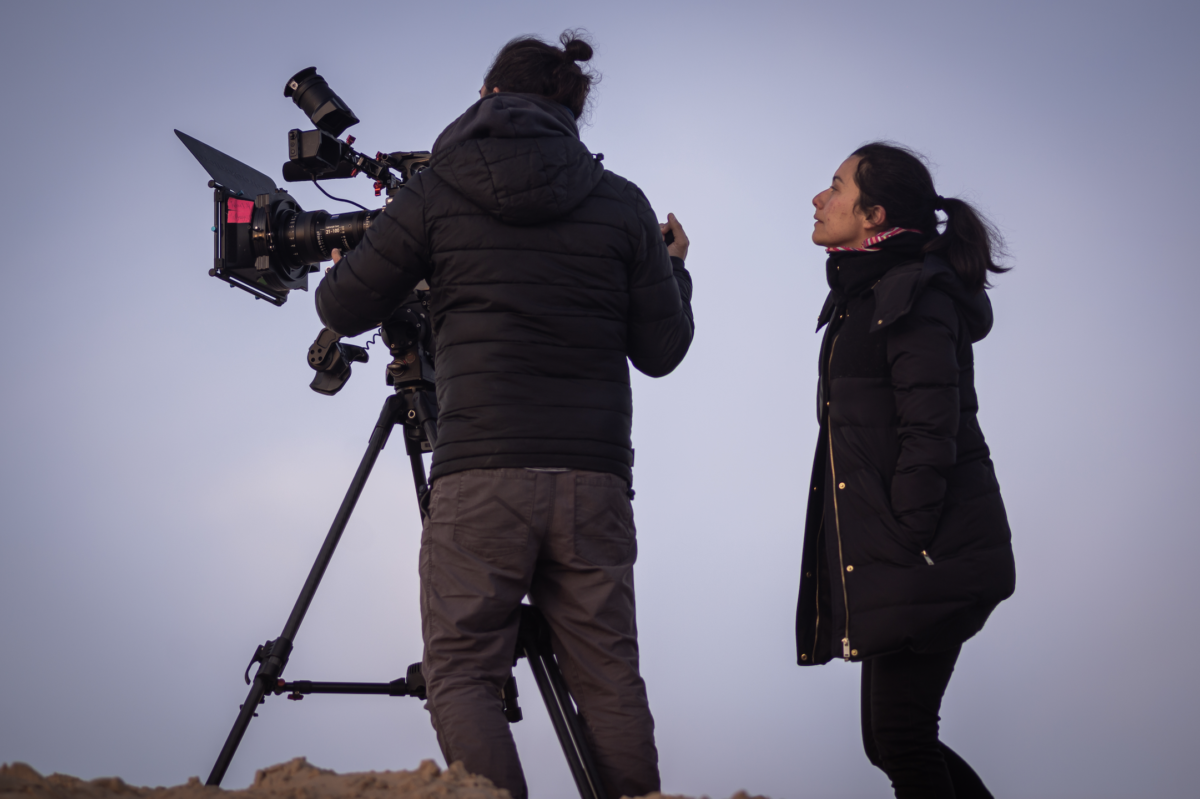
DANA: Yes. I agree. I think that the Juarez femicides are multifaceted. Many different causes contribute to those types of crimes. On that note, how do you go about and creating this podcast capturing the complexity of not only these murders but of Ciudad Juarez as a whole having some sort of balance between these murders and the city’s culture?
CRAIG: Well, I think that bringing Alicia Fernandez on board the project was important for that because she’s a journalist from Juarez who’s been working there for the last what 10 or 15 years during the cartel war in 2008 to 2012. Not only did she have many relationships with interviewees that she was able to invite to take part in the podcast and perform the interviews with, but also in helping us bring all these different people into the project as interviewees. It helped have a broad spectrum of perspectives that we included in the story. Because for thousands of homicides and disappearances over 27 years, you’re talking about people who have many different theories about why this is happening.
While we tried to put the stories of the victims and their families at the forefront of the podcast, in terms of the experts who were offering up interpretive comments about it, we tried to include people who approached the story criminologically. These experts focused on the role that the drug trade played in these murders, experts who focused on the role that gender plays in these murders, people who have examined the story academically, people who have the first-hand experience that was part of these investigations in a direct fashion. As much as possible, we tried to balance them out in the script, writing, and editing to offer listeners a wide variety of interpretations so that they would be able to form their own conclusions about the factors that played the biggest role in these serial murders. Alicia and Lydia were important in that process. Because by the time Lydia started reviewing the scripts, I had been looking at them for close to six months then. I didn’t have fresh eyes anymore; it was important for the project that when Lydia became actively involved in the script, writing, and editing, that she was able to come in and smack me upside the head and throw cold water on some aspects of the scripts to make sure that they retained the balance that we had aimed for in the conception of the project.
ESTEFANIA: You can’t understand the context and where there is trouble if you don’t understand which kind of country, place, or culture you’re talking about. You can’t come into a culture or city and just talk about it so lightly from your own perspective. You have to understand the context. You have to understand where they are coming from. You need to understand that complexity. Of course, you need to understand Juarez’s culture and how it was created as a city. For example, El Paso and Juarez’s city were the same in the 19th Century —if I’m not wrong. You can’t understand Juarez without the United States. Texas can’t understand itself without Mexico and the border.
One of the biggest problems and complexity of this is the U.S. and Mexico’s bi-national transaction. Everything is a transaction, the legal and the illegal. If you don’t understand the close relationship there is between the U.S. and Mexico; you can’t understand the problems that are going on in Mexico. Suppose you don’t understand the relationship between the U.S. and Latin America. In that case, there will be issues in Latin America that you can’t know until you are aware that we can’t figure (Mexico) out without the U.S. and vice versa. You can’t figure yourself out without us. When you have that kind of complexity, you have to understand the culture, language, impulses, needs, and the reasons why they live in Juarez.
For example, Juarez is a migrant city. It’s full of migrants. There are Cubans, Hondurans, and El Salvadordorians trying to get into the U.S. through Juarez. They are seeking asylum and can’t because of the policies that have been passed the past four years and policies passed before (2016). That’s the only way that you can address a problem. That’s the only way you can address an issue respectfully and ethically. It was important to have historians, journalists, researchers not only from Mexico but from the U.S. too. That’s something that Alicia was really smart to think about. Alicia came in with all the booking with the interviewees. It was an amazing slate of interviews that we had —thanks to Alicia, all the proposals she came in with us.
You need to capture that complexity because you can’t understand a murder or understand social phenomena if you don’t have that other part. If you don’t have the other part, all you’re doing is sensationalism. Suppose you don’t take the time to understand the culture and understand the tradition, issues, history, and challenges of the city, and you are only reporting on the murders. In that case, it’s because you only want to do it in a spectacle. You only wanted to do show business. That’s not “The Red Note.” That’s something that Craig and I always had clear from day one. That was one of the reasons why I came in as a producer for the movie and everything. Because there is that compromise, we will need to do all this work to get to where we want to go. Right now, we did a podcast. We hope there is going to be a movie. We hope there’s going to be another project that will entitle some other bi-national storytelling.
DANA: Thank you for that response. That was well put. In trying to capture Juarez’s large complexity and the culture and the transactions that make that up, many people are working on this podcast. In uncovering the research or doing the interviews, was there any sort of fact or statement that stood out to you?
CRAIG: I mean, there are so many.
ESTEFANIA: I have to say the entire podcast. It was so impactful. It was like a punch in the face. So I wouldn’t know how to answer that question in another way, to be honest with you.
CRAIG: We tried to approach this subject systematically to highlight the complexity of these crimes, and it’s not just like a serial killer on the loose. It’s this complex interplay of forces. There was never going to be one answer that somebody gave us that just unlocked the whole story like, ‘Oh, now we suddenly get it.’ It’s almost too complex to put into words.
There’s this good documentary I saw a couple of years ago. And it’s trying to explain how capitalism works, and it describes how a pencil is manufactured. A pencil is not a complicated thing, but to vulcanize the rubber to be the eraser or to the metallurgy that goes into creating the little metal thing, and you have a lumberjack that cuts down the wood. You have to mine the graphite, and you have to —the point in this film is that even a pencil is so complicated that no one person can manufacture it.
I think that was how this felt to me. We tried to put as much focus as possible on the stories of the victims and their families. In talking with experts, investigators, journalists, and government members, there are many layers to this. If we wanted to do a 20 episode podcast, we could have easily done that from the interviews we did because there is so much complexity to the story. There was never like one moment or even one interviewee who unlocked something. It was much more like weaving a tapestry together. We just tried to combine as many threads to make that tapestry as rich as a portrait of these tragically complex events as we possibly could.
DANA: What was your biggest takeaway from it all? What was the thing that stuck with you or that you learned at the end of everything?
ESTEFANIA: The biggest takeaway was the knowledge of myself and my own privilege as a woman from Colombia who had access to education and had the opportunity to move to another country. Having the opportunities that I have, it’s like opening your eyes to the blessings that you have. Not because you had a lot of effort but just because you won a biological lottery to be born in a family that had the means to have you in the way that they had you. That gives you a lot of responsibility. If you’re somebody who gets consciousness around that, you become somebody who can appreciate the things you have.
I have that inclination to make something better for others and try to make this place a little better for myself. Making this place better for myself implies that I have to look out for others’ benefit and create community. For me, that’s been the biggest takeaway —having more empathy towards others and being conscious of the things that you have. How do you put that at the service of others that are less privileged than you? Some people have that calling. In my case, my way of doing it was doing this podcast. My way of doing it is in a way that is ethical and responsible. My way was having these reflections and thinking about how do I add something of value to my society? That is the biggest takeaway that I took from this experience.
CRAIG: I think the moment that stands out to me the most was an interview we did in a bar with this collective. They do graffiti art and make memorials to victims of femicide and other art as well. We were doing an interview with them in this bar. When we started the interview, the bar was empty. It was afternoon time, but by the time we finished the interview, it was filled up with 20 people. We finished the interview, and then everybody was able to make noise again. The sound guy came over to Estefania and me and told us we had forgotten to record room tone for the interviews, which we would need to edit together. So we had to ask all these people who were trying to enjoy their drinks if they could be quiet for five minutes to record room tone. I remember sitting in the bar with all these people, who were so nice to be quiet for us, thinking how special it was to have the opportunity to do the project and experience that moment with the crew and everybody in the bar.
As we were walking out, this man came up to me, thanked me for (“The Red Note”) coming and doing the project. That meant a lot to me because I remember the first time I went to Juarez, I was walking around, and this man shouts out at me, ‘Welcome to Mexico, Americans!’ I’m conscious that I’m in a fortunate position to be able to go there and do a project like this. I want everybody in Juarez to like what we’re doing. I want to do a good job for everybody in that city.
We’ve been working on the project together for several years, and when you spend that much time, even in an intellectual sense, with one particular place, it becomes important in your life. So that man at that bar who told us we were on the right track and to keep going was the most miraculous moment for me. The other thing that hammered home for me was how hospitable, warm, resilient, and strong the people of that city are. I mean, 10 years ago, Juarez was the most dangerous city in the entire world. The fact that the residents of Juarez have come out of the other side of that experience with the warmth, hospitality, humor, and gusto that we saw among the people we talked to and interacted with casually during the production —that’s the thing that stood out to me the most.
I wish we’d been able to talk more about that in the podcast. We could have done 20 episodes on this if we had been so inclined to. It was nice to make that connection with everybody in the city and hear a few people say they like the way we’re going about things.
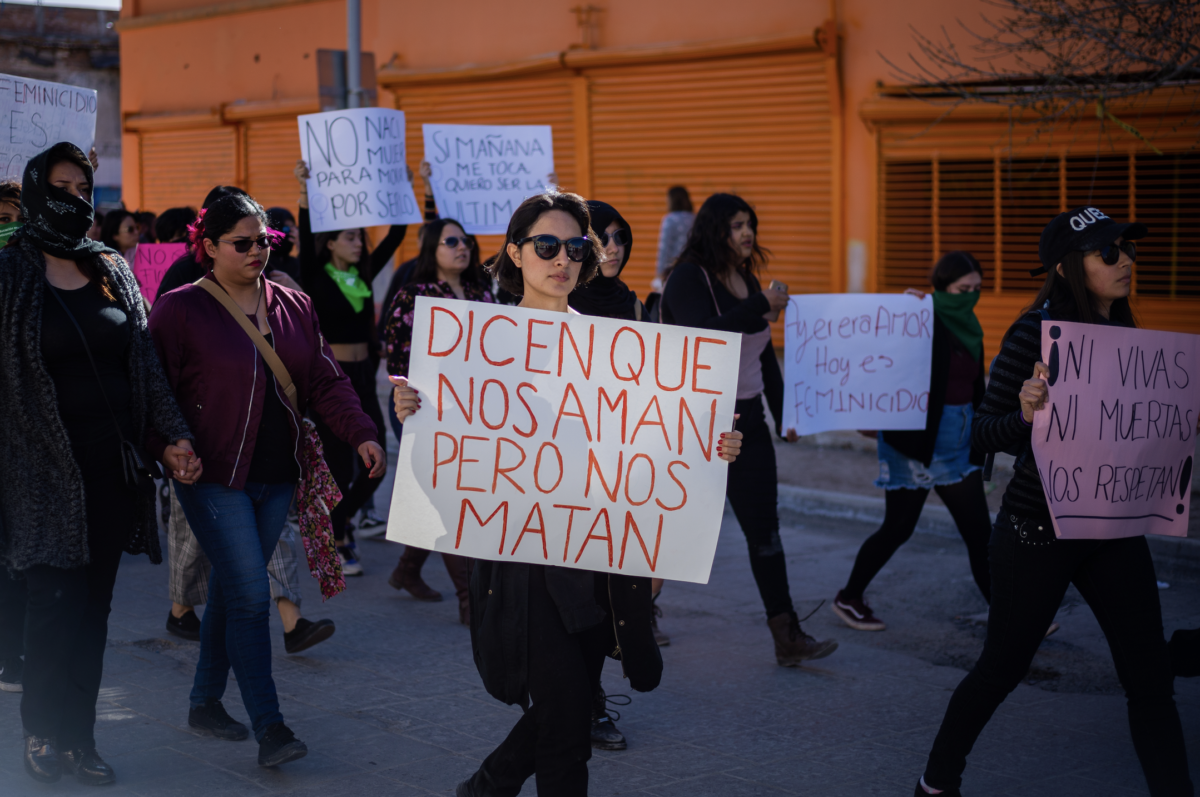
DANA: “The Red Note” does a great job of amplifying the voices of the families of the victims. How do you feel about the common trope and true crime documentaries and podcasts and things like that? The focus primarily on the suspect or the murderer? Things like the “Ted Bundy Tapes” and “Nightstalker,” etc.
CRAIG: I get why people do that because a crime, an investigation, and a trial is an inherently dramatic process. Somebody is murdered, and that’s dramatic. Then you got cops, and they’re out there looking for the bad guy, and there’s a trial —like “Law & Order” did like 22 seasons of that because it’s an inherently dramatic situation. I think there’s also something about the true crime genre that speaks to our culture right now. In the same way that in the 50s and 60s, there were westerns, you had western movies and Western TV shows. Now, procedural crime dramas speak to Americans as a culture for whatever reason.
As it gets popular, some people are doing it for entertainment value like, ‘Oh, hey, we can do a cop or criminologist show,’ and people are going like it because people love those shows. For example, a man in Juarez had been murdered, and his body was cut into pieces and dumped in the street. The headline on the newspaper was ‘human jigsaw puzzle,’ OK, yes, that is a noteworthy thing that has occurred, but the complete and utter lack of empathy for this man and his family —if you’re approaching these stories from a pure entertainment value, you can slide into that lack of empathy. We talked about that with the show’s title; we announced that we didn’t want to slide into those tropes with the podcast and film. Certainly, with the podcast, it’s a lot easier because it’s more of a documentary.
DANA: Speaking of other crime stories, did either of you have an interest in true crime prior to joining “The Red Note?” And if so, what case sparked your interest?
CRAIG: Not especially. When we started marketing the podcast, I subscribed to these true crime Facebook groups to share new episodes with true crime fans. I remember I saw this one post on one of these boards; this woman had written, “God, I can’t wait to get home from work, and curl up under a blanket with a cup of hot chocolate and listen to my favorite serial killer podcast.’ I was like, ‘I don’t think that lady is going to be into “The Red Note.” It is a true-crime podcast in a lot of ways, but it’s not a whodunit. It’s not like, ‘Did Oswald kill JFK?’ You’re talking about hundreds of women who were murdered. Thousands have disappeared over 27 years. There are so many different victims’ profiles, their jobs, and why they were killed. There’s so much complexity to it. It’s not going to be like a “Law & Order” episode where at the end, they lock the guy up, and you’re like, ‘We wrapped that story up.’
There’s no way that this story can end except in an open-ended fashion without fundamentally betraying the reality of what has happened. That’s why Episode Two is called “The Juarez Ripper,” but it’s in quotes because there’s that version of the femicide. I think while it has a lot of the hallmarks of a true crime story, it’s got different story beats in it. I like David Fincher’s film “Zodiac,” which ends in this similar, unresolved way. In many ways, that’s a serial killer movie, but in a lot of ways, it’s not a serial killer movie.
That’s going back to the very first question you guys asked me as a filmmaker. It’s interesting that in staying true to the families’ stories and the sociological phenomenon that has taken place in Juarez, you’re also able to offer a revisionist take on the true-crime genre. At the same time, you get into approaching it in a way that’s prismatic and multifaceted. It’s nice when you’re able to do something that is stimulating for you as a professional. Hopefully, putting something good into the world —I don’t know that a podcast or a movie will magically transform this problem. If we can make it a little bit better, if we can open people’s eyes to these things’ complexity or help people empathize with what many people in Mexico experience. I think it’s easy to have that Donald Trump mentality of, ‘They’re sending rapists and drug dealers if you know absolutely nothing about what people experience south of the border. If nothing else, if we can help people understand those stories and empathize with those experiences, then the years of work we’ve put into bringing this thing to the finish line will have been worth the effort.
DANA: In pop culture, investigative journalism is portrayed as an adrenaline rush. What’s something most people may not know about investigative journalism?
CRAIG: I want to be modest in my answer here because my journalism experience was being an associate editor at the Daily Texan when I was in college. This has been a journalistic project, but having somebody like Lydia Cacho involved —like Lydia is a rock star, investigative journalist. I want to be really, really, really modest in my answer because Lydia is a major leaguer, and I’m in little league.
I think getting to witness Juarez’s community was exciting and interesting because many of the people we spoke with work, colleagues of Alicia’s, or other journalists that I knew that or Lydia knew. It was interesting for me to witness the camaraderie in that community. To be an investigative journalist along the border in Juarez is a challenging job.
We went to an office there in Juarez, and these employees lost one of their colleagues who had been murdered a few years ago. And they keep his desk permanently unoccupied as a memorial to him. I think part of the camaraderie stems from the fact that investigative journalists along the border and in Mexico are so embattled and face such an ever-present threat of violence that they have to team up and look out for each other and be there for each other when one of them is the victim of violence. Getting to witness that camaraderie was not something that Estefania or I went into the project thinking about. It was nice to witness that and be a small part of it, and working with great journalists to put this story together was a real privilege for me.
I feel lucky we got to collaborate with Alicia and Lydia. I think it’s important that everybody at Imperative, the production company we worked with, was committed to making this project an authentic presentation of the stories. Not just in terms of having a local flavor air quote, but doing a Spanish version of the podcast. At the same time, we had an English version so someone can listen to all 10 episodes in English or Spanish. This has been great because people in Mexico, Central America, South America, Spain have been able to hear it, which they would probably not have been able to do in great numbers if it had just been in English.
Estefania and I are grateful to Jason and Laura at Imperative Entertainment for believing in the concept, in the team, and trusting everybody to go out and do it without micromanaging the entire process, which is a rare thing. Not every production company in Hollywood is going to be that forward-thinking and progressive in their working methods. There are so many people without whom this project would not have been finished in the way that it has. At the end of the day, if somebody doesn’t believe in you and invests their trust in your team’s abilities, it’s impossible to get those things done. We were lucky to be able to partner with a company like Imperative to do this project.

DANA: Thank you for sharing that with us. Was there another favorite or positive memory that you have while working with “The Red Note” team?
ESTEFANIA: Something that always amazes me is that in the cities or places that go through a lot of pain and darkness, you can find people who cherish friendship and cherish how you are presenting their story in a caring way and that you are trying to do good to them. One of my happiest and greatest things that happened to me in Juarez was experiencing how everybody always tried to see the light in the dark. Everybody tries to see the good in the bad. Everybody tries to see how they thrive against all odds and how they still live there. They still love Ciudad Juarez. They still love the place they live in. They still love the people. They still love the community they have built for themselves in such a hard situation and through a hard circumstance.
All of them had to live together. They only have themselves as their own support network to relate to the pain and the obstacles and challenges as a city and citizens of this city they have had to go through. For me, that’s the happiest thing I could ever think about. That’s the greatest thing that you could say about Ciudad Juarez. It’s such a welcoming place. It’s a hard place, but it has such welcoming people, and they have beautiful people who are over there. Somebody that comes up to you and says, ‘Thank you for coming here and doing this project and thank you for talking about something that is important and has been so painful,’ that’s something that we heard a lot of times when we were there.
Even the families open their hearts to us to talk about the most excruciating and difficult portion of their life about the murder or disappearance of their own daughter. I can’t understand how big their hearts are to open up to tell us those kinds of things and the trust they invest in you to give you that piece of the story of their own life story. They do not owe us anything, but they do it with all their hearts and all their love and all their soul. I think that’s the happiest thing. It’s refreshing. It’s lovely. It’s beautiful.
DANA: That’s an inspiring message. I’m glad we were able to end this episode on a more uplifting note. So really quickly, could you all share with me what comes after “The Red Note?” Are there any new projects that are in the works right now?
ESTEFANIA: We’re trying to come up with some podcasts that go around Latin America, talking about some social issues, similar to “The Red Note.” We’re trying to prepare those stories. We’re hoping we could do that later this year. We have the movie now, “The Red Note” movie. I think that Craig should talk about that one.
CRAIG: Well, we’re very hopeful that having finished the podcast that we’ll be able to begin work in earnest on producing the feature film in the not too distant future. Estefania and I are working hard to make that product a reality as soon as we possibly can.
DANA: Great. That brings our episode to a close. Thank you so much for spending time with us and taking the time to chat with us today.
If you’re interested in pursuing a media career, make sure to visit us at latinitasmagazine.org for more information. Thank you guys so much for tuning in to this episode of 20 Questions With. We’ll see you next time!
About the host:
Dana Garibaldi is a teen writer pursuing the International Baccalaureate program at Lamar Academy. She currently writes for Latinitas Magazine and Choose Change, and is passionate about female empowerment, closing the STEM gender gap, and current social issues. Whenever she’s not writing, she’s hosting Fun Times with Dana and Heidi (her positive news podcast) or hanging out with her cat, Thor.
Featured Image courtesy of Hollywood Reporter.
Want to read more stories like this? Please give us your feedback here!
Latinitas Magazine is a department within Latinitas, a registered nonprofit. Readers like you fund us, so please consider donating today. Thank you!


